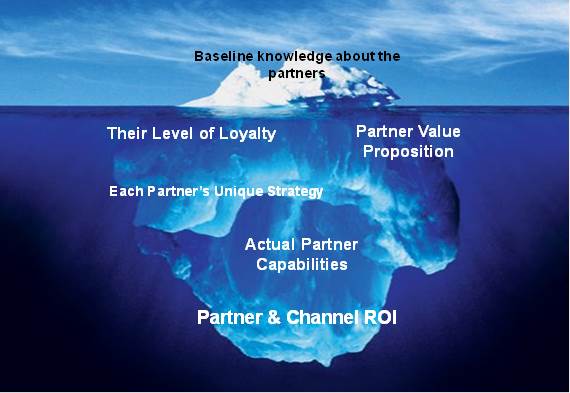Do You Really Know Your Channel Partners?
Channel sales leaders frequently ask themselves, “Do our current partners produce the ROI we need from our indirect channel?” And too often the question becomes a statement, “Our current partners are not producing the ROI we need!” This statement often arises due to lackluster results, causing channel sales leaders to hypothesize the reasons and take corrective action, usually in the form of one of the following:
- recruit new partners
- change the partner program
- improve partner enablement
- fire the partners, go direct
Sometimes, in their urgency to solve the problem, channel sales leaders act before they can fully answer the fundamental question, “Do we really know our partners?” Such actions made in haste usually result in suboptimal decisions that don’t fully address the need and thus don’t result in significant improvement or lasting impact. To ensure leaders take the appropriate actions to nurture a mutually beneficial relationship, they need a deep understanding of their partners’ strategies, goals, capabilities, loyalty, maturity and ambitions.
Case in point, a recent client decided to recruit a “new breed” of partner because they felt their current partners could not reach underperforming markets and lacked the desired value-add capabilities; specifically add-on services to drive customer usage. Before taking action, they asked the Alexander Group to evaluate the current partner portfolio. Our findings surprised the leadership team. With a better understanding of their existing partners’ needs, capabilities, and motivations resulting from the evaluation, we discovered that the current partners could indeed meet the company’s desired objectives. What the partners needed was clarification of the company’s shift in strategy and the right motivation to support the company’s new direction. As a result, they shifted away from the more costly option of recruiting new partners. Instead, they developed an effective, two-prong approach to revamp their partner model: (1) a comprehensive communication strategy and (2) a redesigned partner incentive program that aligns with the evolving corporate strategy and role of the partner.
Most channel sales leaders would say they know their current partners, but in many cases their understanding is limited to superficial, baseline knowledge such as:
- Total Number of Partners (we are occasionally surprised to learn even this number is often unknown)
- Types of Channel Partners (most companies have more types than they realize or recognize)
- Current Partner Value (channel-driven revenue is usually easy to determine; other partner value-adds can be difficult to understand and quantify)
- Partner Revenue / Value Distribution (for example, understanding where 80% of our partner value comes from, and putting effort/investment in the right places as a result)
However, this information is just the “tip of the iceberg.” Best practice organizations develop a deeper layer of partner insight, clarifying exactly what actions are required to optimize the company’s indirect channel model. This includes:
- Unique Partner Strategies & Value Propositions: The level of alignment between the partner’s individual goals, objectives and aspirations with the company’s go-to-market strategy
- Partner Capabilities: Their level of reach and value creation – marketing, sales, fulfillment, service, and solution added-value – against company needs
- Partner Loyalty: Partner exclusivity, level of company mindshare, dependency on company revenue, level of collaboration and confidence in the future of the partnership
- Partner ROI: Very simply, the current and forecasted return on your partner go-to-market investment
Gaining this level of insight requires diligence and a hands-on approach, but it pays dividends in the value gained from the partnerships. Building out your toolkit with the following techniques will enable you to better understand your partner:
- Engage with them face-to-face, not just at your “presidents club” trip with your top x partners
- Gather the voice of the partner using quantitative and qualitative feedback that partners might not otherwise share face-to-face or directly with you, the company
- Quantify and benchmark your channel investment and ROI — investment in the channel vs the revenue generated
- Measure and benchmark partner loyalty through a loyalty index approach
- Assess your enablement — effectiveness of the channel account manager role, partner program, lead generation, technological integration, ease of doing business, etc.
- Measure your alignment on strategy direction, rules of engagement, level of channel conflict, etc.
- Listen to the customer through a CSAT process to understand the value your partners are providing them
- …again, the list goes on and on
This deeper insight allows channel leaders to optimize indirect channel effectiveness, minimize costly and unnecessary actions, and provide the insight to ultimately determine the required channel mix (direct vs. indirect) to maximize the profitability of your go-to-market strategy.
At Alexander Group, we have developed a comprehensive channel productivity assessment that incorporates these techniques, in order to help you better understand your partners and quantify the value they provide, allowing you to meet your business objectives and maximize your indirect channel ROI.
Learn more about Alexander Group’s indirect channel services.
